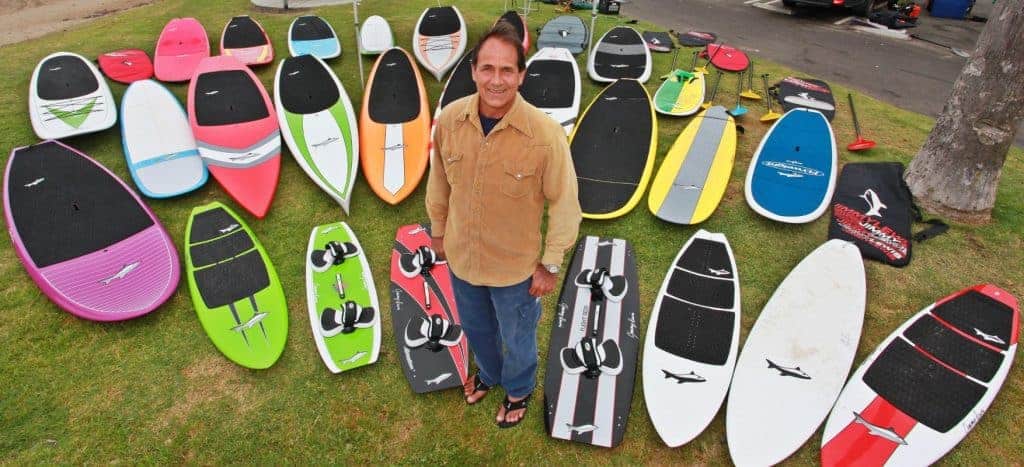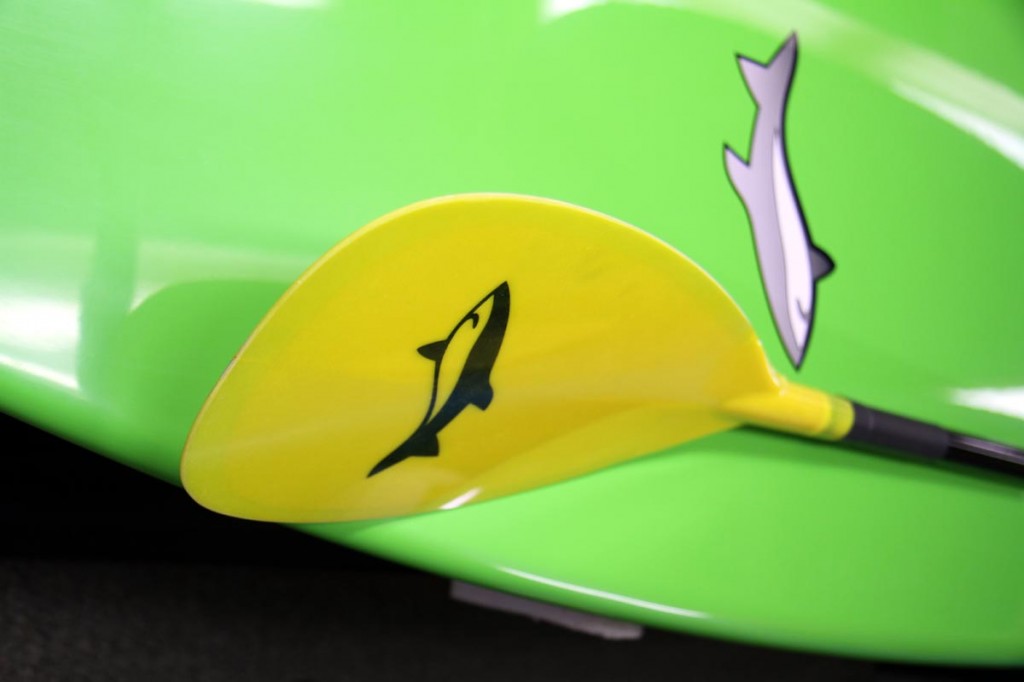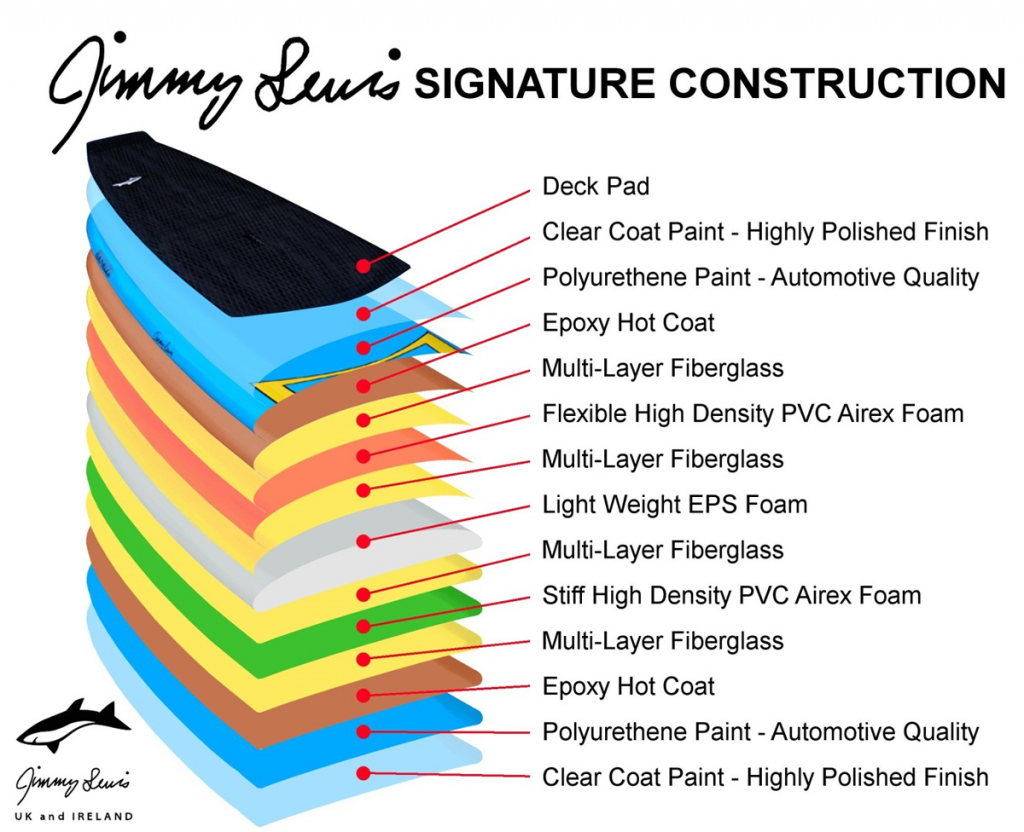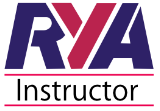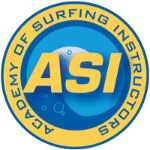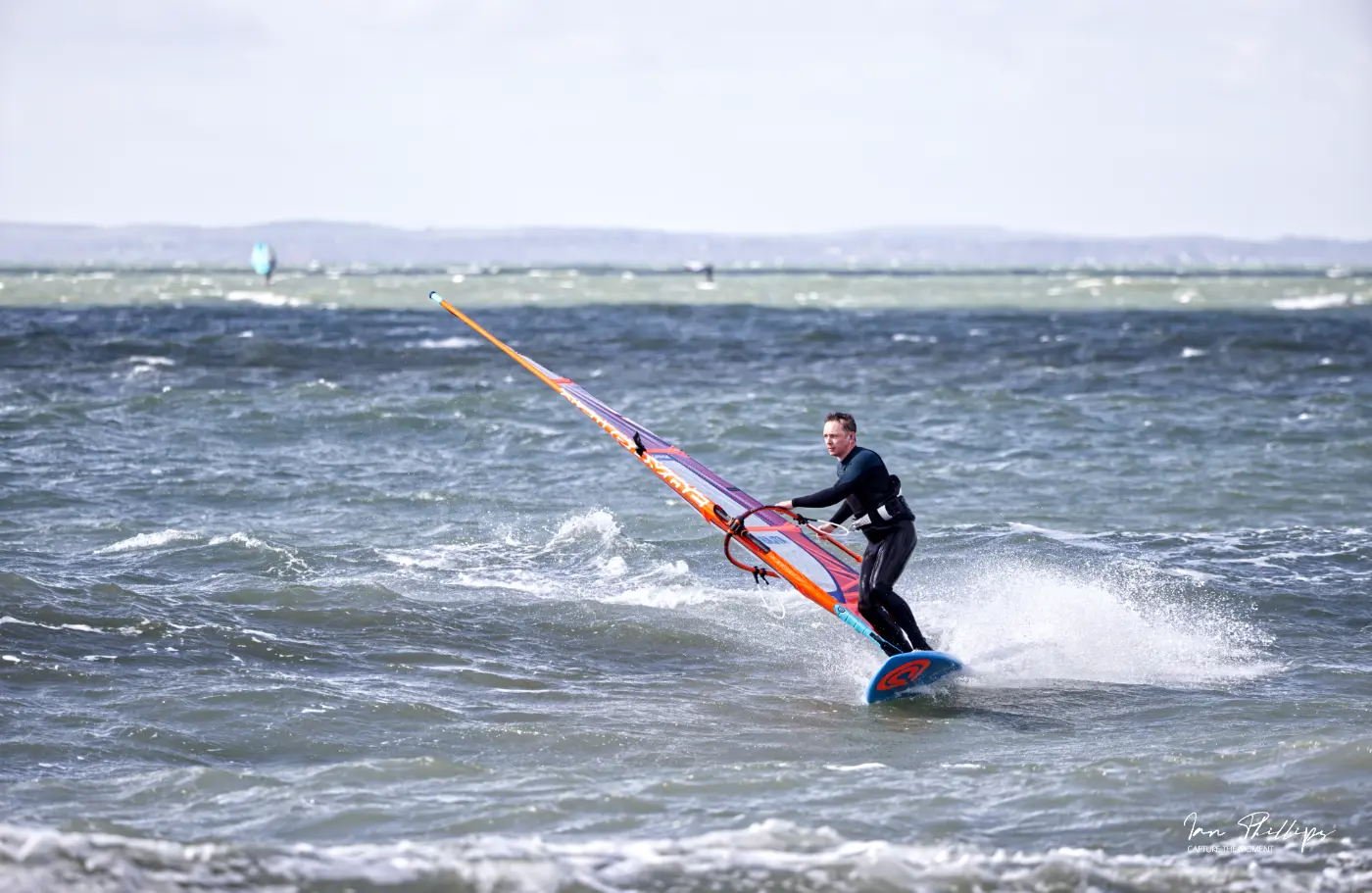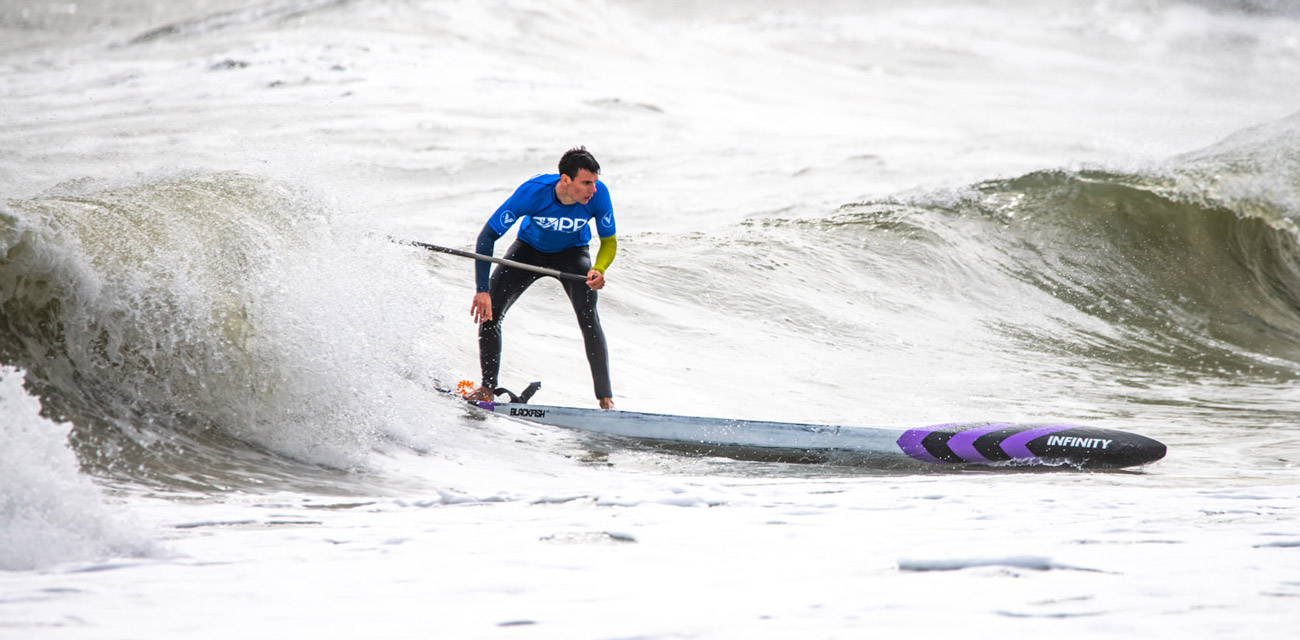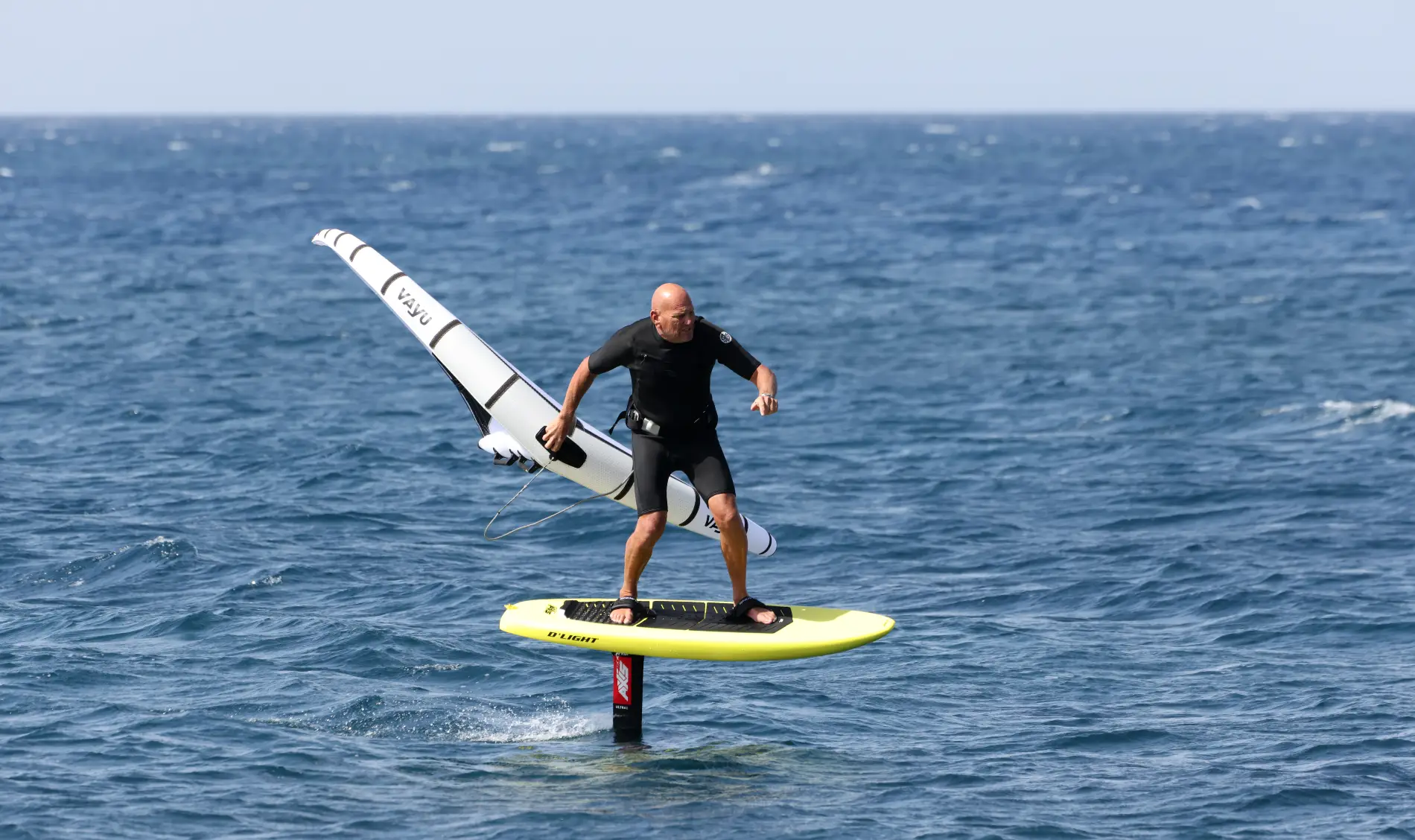Jimmy Lewis standup paddleboards are the most respected brand worldwide and are making their debut in the UK.
With over 40 years of shaping experience on everything from windsurfing, kiting, wakeboarding and surfing, Jimmy has put his wealth of knowledge into an amazing range of standup paddleboards (SUP)
His dedication to perfecting each board means you really do get the perfect board for your preferred discipline. Providing the right amount of volume and balance means the boards perform effortlessly.
Jimmy’s mastery of this fine balance between stability and performance is why Jimmy Lewis standup paddleboards are the standard that all others aspire to.
The 2013 range of Jimmy Lewis SUP boards include:
- Maliko or M14
- Slice
- Blade II
- Bombora
- Son of Bombora
- Hanalei
- Cruise Control
- Kwad
- Striker
- Mano
- Mission
- Stun Gun
Construction of the Jimmy Lewis Standup paddleboards
Knowing all about the board you’re going to buy is so important to make sure you really appreciate what you are getting for your money. Probably the first question you should look to be answered is about construction. What it is made of will often dictate weight, but how it is constructed with that material will affect weight, strength and durability.
Materials:
The hype has been carbon, carbon, carbon. It is super light, looks good and is stiff. What they forget to say is it is fragile and more expensive so in effect you’re paying more for a superb board, that could more easily be chipped or dinged. Why would you use such a fragile construction on a product that needs to be able to take a bit of a beating sometimes. Don’t get me wrong, I am not sying your expensive carbon board will fall apart, but you definitely have to be more careful.
Jimmy has always maintained that strength and durability are key to the quality products he produces and his unique construction method doesn’t employ carbon. His method of building a board is based around “Epoxy PVC Sandwich Construction”.
We have a diagram to show you exactly what this entails…
In the beginning all boards had a foam core that was wrapped with resin impregnated fibreglass. The shaper would squeeze out the resin and voila, a solid skin, but weight and strength were not maximised.
Now move ahead and along came the Epoxy PVC Sandwich method of construction. Moving away from heavy layers of glass around the core, shapers would first wrap the foam core with thinner layers of glass followed by flexible layers of high density pvc foam. This in turn had more thin layers of glass around it so in effect you have created a far more rigid structure with reduced weight.
When we look at many large scale manufacturers, we appreciate the need for moulds to bond and shape, but what stands out with Jimmy Lewis standup paddleboards is the fact that every single blank is finished by hand. Jimmy doesn’t want a computer popping out blanks, he has a team of trained shapers whose attention to detail meets those high standards.
Strength is in the detail:
The sandwich construction gives superior strength to the board overall, but there are areas that need reinforcement due to the additional stresses they encounter. The fin boxes and leash points are examples of these, so make sure that the fin box has been reinforced with high density PVC foam. If it has just had extra fibreglass then you’re adding weight for no reason.
Automotive hand painted finish
The final finish is what your friends will admire so it has to be perfect. Every paddleboard has a hot coat of epoxy, primer, paint and then clear coats. Just like in car manufacture, each layer of paint is masked and sprayed by hand. The final clearcoat is hand polished to give a deep shine. The overall finish is really tough adding strength and durability to your board.
In our own experience
I have had a lot Jimmy Lewis SUPs in my school and for my own use. They have been dropped, bumped into marker buoys on downwind runs, been crashed into by other paddle boarders and more. To say they have come out the other side with only minor scuffs is an understatement. I would hand on heart say these are the toughest performance boards on the market and will last a long time so you could consider this a long term investment.
